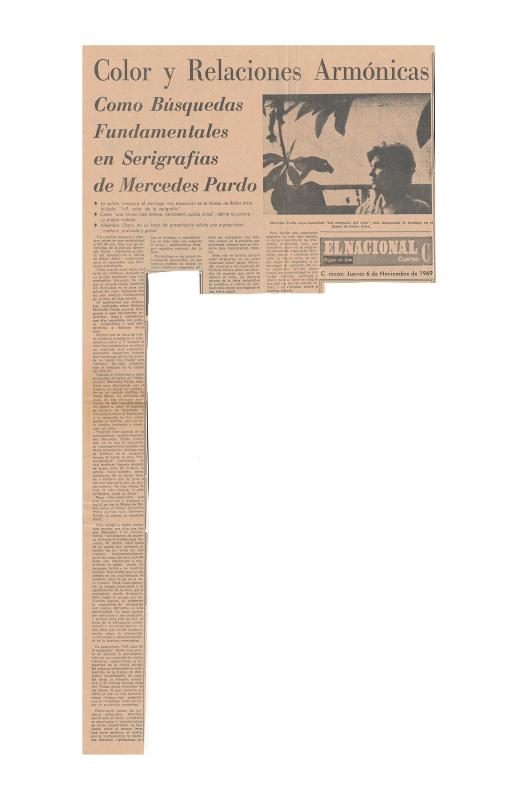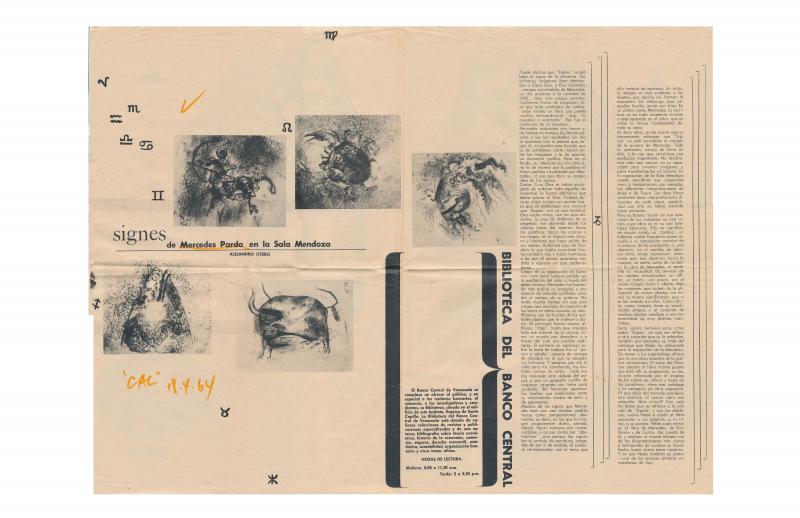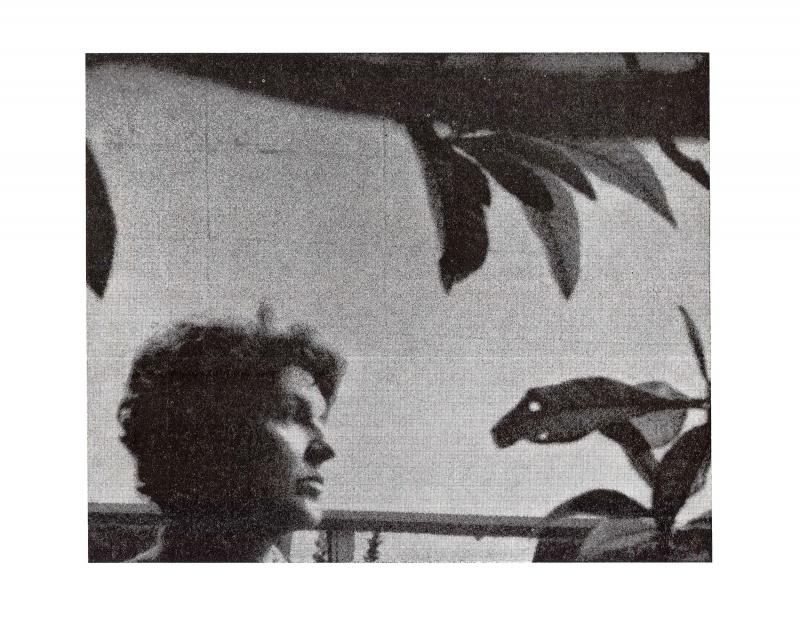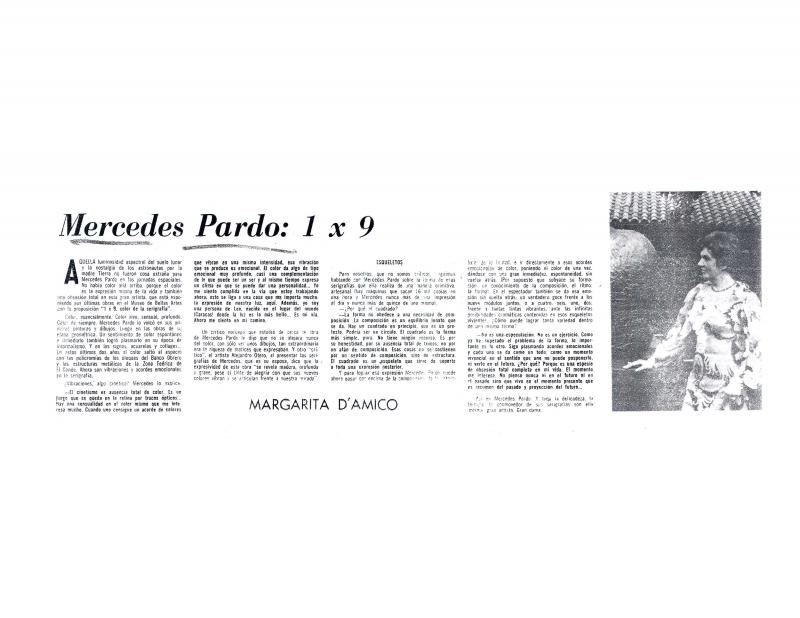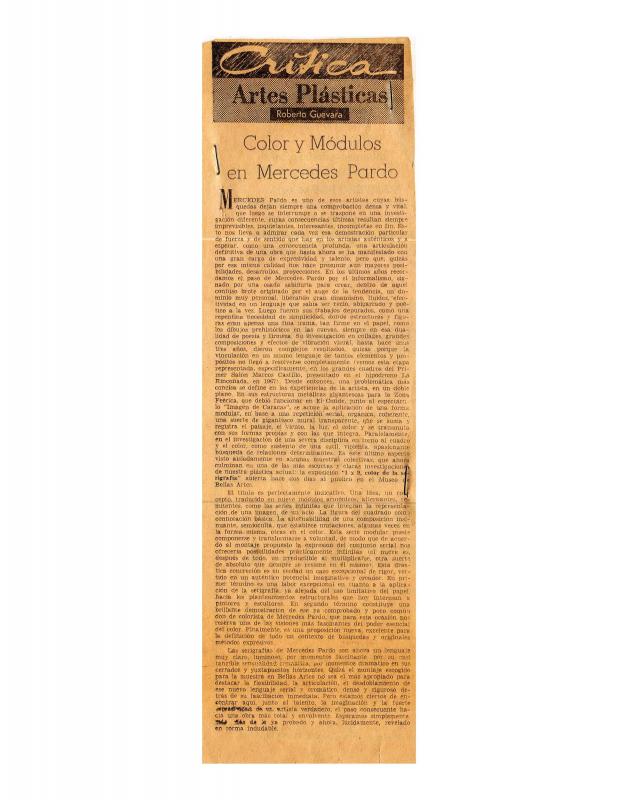The Venezuelan art and cultural journal Imagen—founded in 1967 by the Instituto Nacional de Cultura y Bellas Artes—dedicated this article to the exhibition of silkscreens by Mercedes Pardo (1921–2005). The exhibition, titled 1x9 serigrafia del color, opened on November 9, 1969, at the Museo de Bellas Artes, and was accompanied by a text written by Alejandro Otero (1921–1990), the Venezuelan kinetic artist who was among the first to introduce abstraction in Venezuela and was also Pardo’s husband. Most of this article consists of an extract of Otero’s text, and as such it is not the only review of this exhibition that uses his text to inform the public about her work [see the ICAA Digital Archive (doc. no. 1325234">1325234)]. In his text, Otero explains that the nine silkscreens are the structural decomposition of a square, and that they succeed in keeping the “integrity of the initial form” even as separate works. Otero then shares his detailed visual analyses and comments on Pardo’s chromatic approach. He also elaborates on the support of these works, a white Formica square on a wooden frame; this, he explains, provides a technique as such with a denser finish, compared to the same media on paper. Otero claims that Pardo’s invention of harmonious relations is a unique contribution to silkscreen.
Otero’s focus on both color as well as the technical and structural preoccupations embedded in her works is in line with most of the literature on Pardo, although his text is a contribution to the understanding of her art production due to the detailed analysis of each modular element of this series. While much has been said about the centrality of color in Pardo’s work, on her experimental attitudes toward geometry, media, and supports, it is very rare to find a critique of her art purposes that provides such a detail on the nexus between different works within the same series. By explaining the structural connections between each silkscreen in the 1x9 series and the ways in which they can be visually combined to create a variety of larger compositions, Otero is bringing the reader’s attention to the potential of each line and each color beyond the boundaries of the individual Formica squares. Moreover, his text highlights the intentions of the artist in addition to the agency of the viewer. As a point of reference, he had similarly clarified Pardo’s approach in a previous series, Signes (doc. no. 1331628).
For the catalogue reproduction of the text cited in this article, see Alejandro Otero, “Mercedes Pardo: color de la serigrafía” (doc. no. 1143176). For further reading on this exhibition, see Margarita D’Amico, “Mercedes Pardo: 1 x 9” (doc. no. 1155959); Roberto Guevara, “Color y módulos en Mercedes Pardo” (doc. no. 1155991); and anonymous, “Color y relaciones armónicas como búsquedas fundamentales en serigrafías de Mercedes Pardo” (doc. no. 1325234">1325234).

